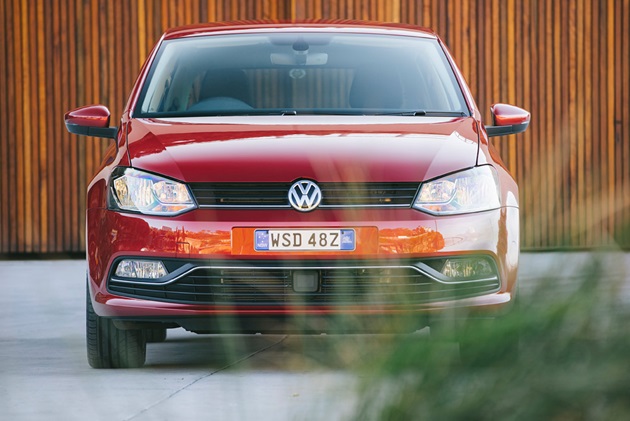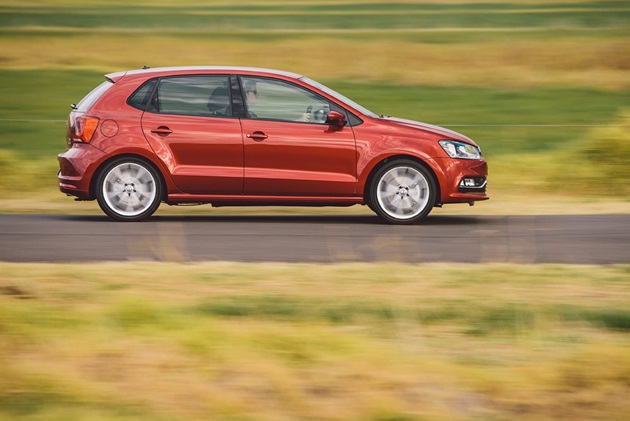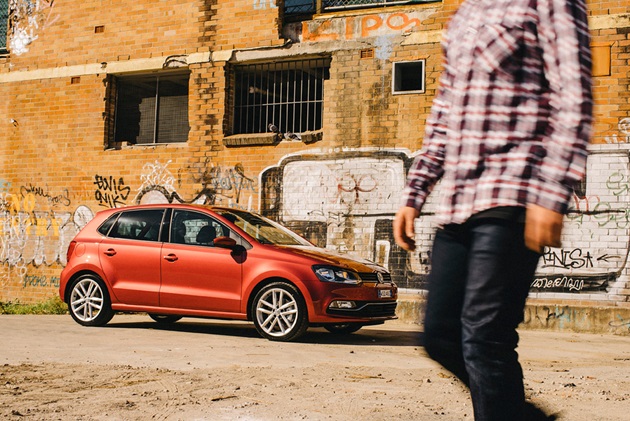By Alex Forrest
Following the launch of a revised and re-engined Volkswagen Polo in August 2014, the freshened-up baby Volkswagen came tantalisingly close to winning the Australia’s Best Car award for best light car.
The Polo finished just 10 points behind the winning Renault Clio, with the third placegetter, the Honda Jazz, another 26 points behind.
Given the cut-throat competitiveness in the bustling light car category, this was still a very good showing for the new little Volksy.
Among the key changes for the current Polo over the old one is the addition of some impressive safety technologies, namely adaptive cruise control (optional), auto braking (optional), fatigue detection (optional) and multi-collision braking (standard).

The safety features have all flowed down from other Volkswagen models such as the Golf and Passat. While auto-braking will be familiar to many readers, the multi-collision braking function is a little more unusual.
After an initial collision, multi-collision braking will automatically brake the vehicle to avoid secondary collisions or reduce their severity. Commendably, it’s standard on all Polos.
The other safety equipment mentioned above are part of the optional Driver Comfort Package, which is an extra $1,500. It’s unfortunate you have to pay extra to get these, but $1,500 isn’t too much for this amount of extra gear.
The only drawback here is that a reversing camera can only be had on the top of the range 81TSI as an option. On the Toyota Yaris, a reversing camera is standard across the range.
As previously, there are just two variants in the new Polo range. Each have a new 1.2-litre turbocharged petrol engine which is in two different states of tune.

The entry level Polo is the 66TSI ($15,990 drive away for the manual), whose 1.2-litre engine makes 66kW and 160Nm, while the top of the range Polo is the 81TSI, which has 81kW and 175Nm.
What’s really impressive about both these engines is they make their peak torque from a very low 1,400rpm, a feature which makes them so pleasingly tractable in city driving.
Gearboxes comprise a six-speed manual or seven-speed DSG (twin clutch auto). The DSG will add an extra $2,500 to the price.
Our test vehicle was a DSG-equipped 81TSI fitted with the Driver Comfort Package, so with all the safety assistance gear. This comes in at $23,790, which seems a lot for a light car but isn’t bad given all the safety tech you get.
The DSG gearbox is good for maximising fuel efficiency, however the way it is tuned in the Polo does cause it to sometimes take too long to shift between reverse and drive, and to kick down when in traffic.
However, a seven-speed gearbox in a light car is indeed a rare thing – the only other is the Audi A1, which is based on the Polo.
Excellent handling has been a hallmark of the Polo for some years, and it continues with the 2015 version.
It steers responsively and predictably and although it’s not a sports car, its inherent chassis dynamics are good and feels more planted on the road than a car of this size should.

The interior is rather plain and has little in the way of razzle-dazzle, but it does function well and is very well put together.
Space inside for the front passengers is good for a light car, but rear legroom and cargo capacity isn’t a patch on that of the Honda Jazz.
The Polo’s infotainment system is simple and easy to use, and the Bluetooth connectivity is excellent, connecting with your phone as soon as you start the car.
Another downside is that sat nav isn’t available in any of the current Polo range – a feature which can be had in its competition.
Nonetheless, the Polo offers a benchmark level of safety kit for the class, for a not unreasonable outlay. It’s also a very solidly built thing, which is good looking and for the most part, fun to drive.
You’ll just have to weigh up whether the positives such as its safety gear, fuel efficiency, looks and handling are enough to offset its few downsides.
| Price driveaway (as tested): |
$23,970 driveaway |
|---|---|
| Engine: | 1.2-litre petrol |
| Power: | 81kW @ 4600-5600rpm |
| Torque: | 175Nm @ 1400-4000rpm |
| Claimed fuel economy: | 4.8L/100km |
| ANCAP Rating: | 5 stars |
| CO2 Emissions: | 113g/km |
